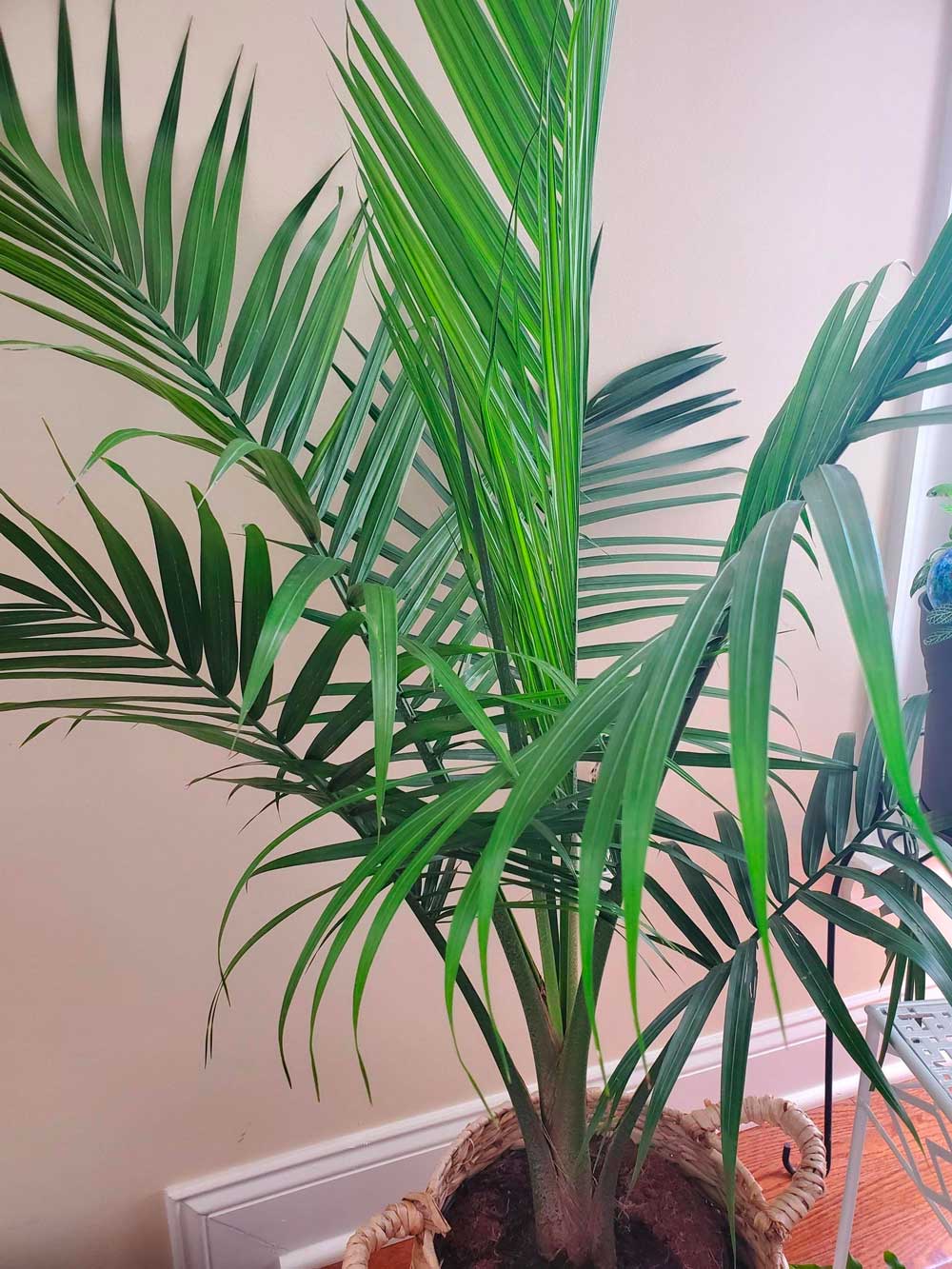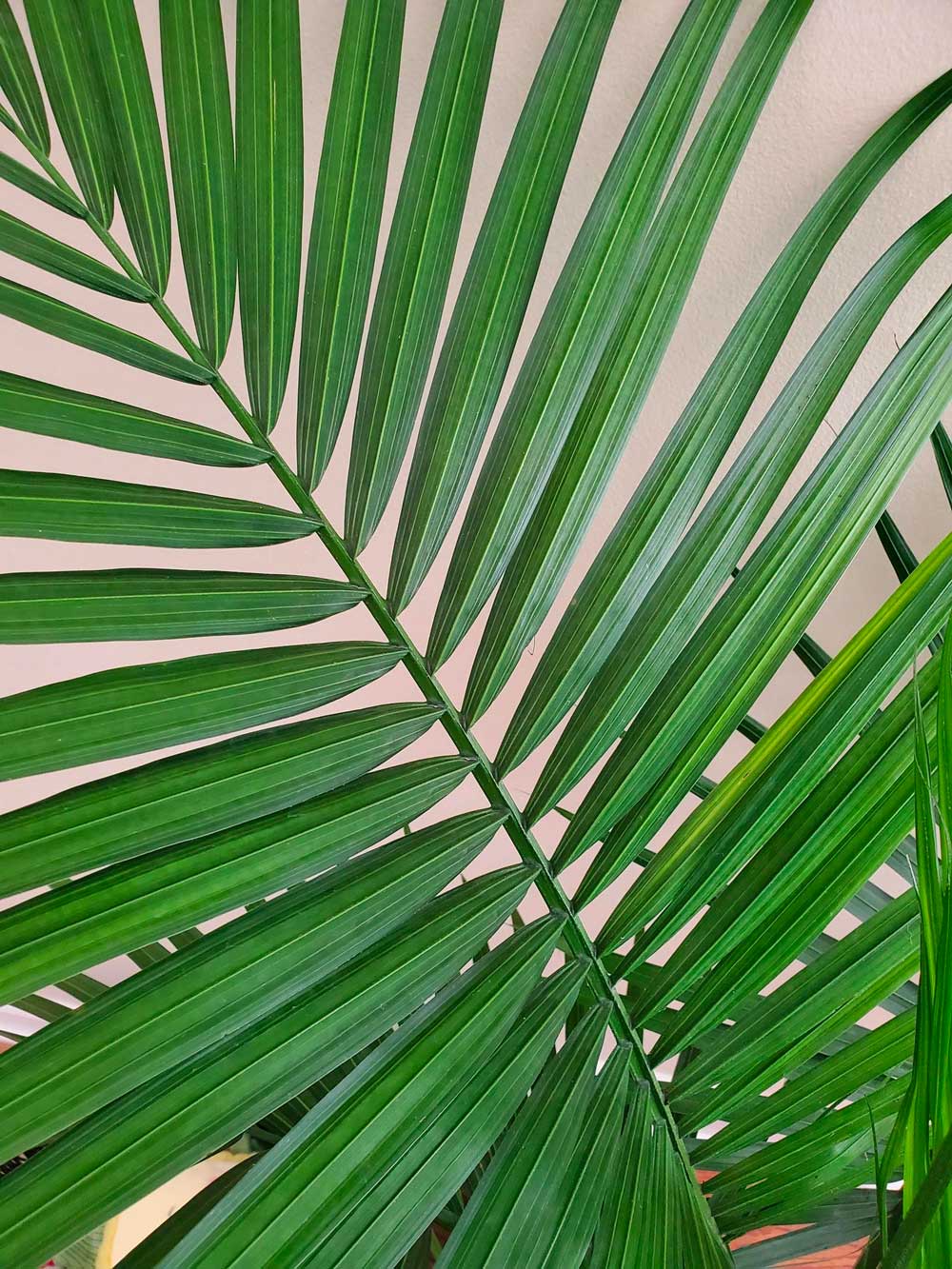Indoor Palm Tree Care: How to Trim a Palm Tree Plant
Indoor palm plants have more than just an ornamental job to fulfill. Combine a few pots together and you have yourself a veritable tropical jungle that purifies the air in your home. Because nothing says the tropics like the graceful and dignified palms. In any collection, the trusty potted palms are the backbone that ties the little jungle together.

If you have been following the other plants we cover here, you must have noticed that we usually present plants that are easy to grow and won’t challenge you with their care and high-maintenance. Indoor palms are no exception. They practically take care of themselves and all they ask of you is the occasional watering and cleaning details.
Advantages of Indoor Palm Trees
So what makes palm trees such wonderful houseplants? Well, for one thing, they are well-behaved plants. By that I mean they don’t make a fuss if you forget to water them or give them plant food. They don’t wither and change color and go into a phase or what gardeners like to call “plant sulk”.
Even though we’re talking about palm trees that grow in the tropics, these plants are quick to adapt to life indoors. They thrive in the shade and as long as you keep the house temperature stable, they don’t complain. You won’t see drooping fronds or fallen leaves in a passive-aggressive protestation the way other houseplants do.
Another benefit is the way the palm plants clean and purify the air in your household. They remove toxins from the air and help you breathe cleaner and fresher air even without using air fresheners. According to a study by NASA, houseplants like palm trees remove air pollutants at a high rate.
Palm trees are known for their longevity. They last for long years with proper care and feeding. When your palm outgrows its indoor surroundings, you can move out to the garden and watch it grow and give you shade.
Varieties of Palm Houseplants
Palm trees come in all shapes and sizes. This is not hyperbole. The exact number is 2,600 species. Some palm trees don’t even look like they belong to that family. Put together, they appear to be different plants. But they are in fact palm trees. Here are some of the best varieties to grow indoors.
- Cateracterum palm: their best feature is their arching fronds which sway around like they were dancing to the slightest breeze from a distant fan. They’re native to Mexico.
- Yucca palm: a little demanding in their care and maintenance and require rich soil and top-quality fertilizers.
- Ponytail palm: a succulent plant that has nothing to do with the palm family or even trees in general. As the name implies, expect a plant from the Agave family with a bushy top.
- Butterfly palm: Ignore the name since this is a cane-like plant. You group a few canes in one pot to enjoy lush frond foliage that is the focal point in your living room.
- Majesty palm tree: a tall tree that needs space, rich soil, plenty of sunlight, and water to grow. Not suitable for most homes, but if you have a large house, you can adopt one.
- Sentry palm: use this one in your home or office. It’s a little pricey but easy to care for.
- Areca palm tree: the feathery and arching fronds make this a favorite in bright households. It needs lots of light to thrive but on the downside, it is a short-lived plant.
- Fan palm: some varieties of this palm are cold-hardy and tolerate temperatures as low as 10 degrees Fahrenheit.
- Parlor palm: when parlors were all the rage, this palm was a fixture in every home. They need constant repotting and can grow to 6 feet tall.
How to Grow Indoor Palm Trees
Since we’re talking about thousands of species under the common Arecaceae family, we will not get into specific details that do not pertain to all species. So let’s focus on the common factors to consider that apply to most of the common household palms.
Soil
Palms grow in just about any soil or soil mixture you drop in the pot. This is an endearing quality that has helped this plant find its way into many households. Mix your soil with peat moss, shredded bark, and leaf mold to give it a loose and porous texture. A generous portion of mulch and vermiculite mixed well in the pot helps with water retention in case you forget to water it. Most indoor palms survive in the same pot and same soil for years. So you won’t need to repot the plant that often if at all.
Light
Light is not one of the requirements of growing an indoor palm plant. Not all homes are well lit and flooded with sunlight all year round. Palm trees understand that and they make do with whatever light they can get. Even dim light still won’t make a dent in their growth or slow the dancing of their cheery fronds. One thing for sure, don’t expose them to direct sunlight since that will have an adverse effect on them.
Water
For some species of indoor palm trees, water is a must. I’m talking about regular watering like twice a week. But these are usually the flashy species known for their height and bushy fronds. Most other species that have modest heights don’t require regular irrigation and can do with dry soil if they have too. However, if you want your plant to grow its bright fronds and look happy, then maintain a moist soil during the summer months. Don’t overwater the palms since waterlogged roots rot and die.
Fertilizer
Just like water, soil, and light, palms consider fertilizers a luxury. It’s not needed for the plant to grow. Keep in mind that indoor palms rarely if ever flower. Their fronds remain arched and lively once they mature. So there’s not much of a growing season for the plants to require extra nutrition. You can still add a slow-release fertilizer to encourage the tree to grow a bushier top if that’s what you’re going for.
Palm Tree Care
We saw how it is easy to grow palm trees. You practically put them in a pot, water them every now and then and let them enjoy their sedentary and sage existence. Their care couldn’t be easier either.
Pests
Pests are uninvited intruders trying to crash your palm party. Most often you’ll find spider mites, mealy bugs, and houseplant scale making a nest in the fronds of the palm. You can use a natural pesticide organic neem oil to take care of the bugs. Chemical pesticides don’t do a good job and they pose a risk to the household and the pets.
Pruning
Once in a while with a good organic fertilizer, your palm tree develops a bushy top that grows out of shape. Think of a bad-hair day. No matter what you do, the fronds won’t fall in line. You would also notice some yellow fronds and others that are dead or dying.
This calls for pruning action.
Start with the low-hanging leaves. They’re the first to go brown with age. If that still leaves the palm looking too shaggy for your liking, remove some of the low fronds at the base where they meet the trunk.
Brown tips are another common problem. They don’t mean the whole frond is bad. You can just trim the brown tips off leaving the healthy frond to grow.
Propagating
You can propagate palm trees in various ways. Division, air layering, and cuttings are common ways of propagating these household plants. Some species can be grown from seeds which is the preferred way. In this case, the tree produces dates, and seeds can be obtained from the palm dates. You can mail order the seeds and plant them in the pot.
Other species such as ponytail palms and sago palms grow pups. These are offshoots that evolve into fronds. However, if you remove these pups at the stem and plant them in a pot they will grow roots.
Troubleshooting Common Indoor Palm Tree Issues
Some common problems you might encounter when growing and caring for your indoor palm tree include:
- Overuse of fertilizers. This is especially true of chemical fertilizers which result in a spurt of growth. It’s better to use organic fertilizers and slow-release supplements to feed the plant for a long time.
- Spider mites. They are the bane of indoor palms. Get rid of them using natural pesticides as soon as you see them. They multiply quickly and might affect other plants in the house.
- Lack of water. Since palm trees don’t require regular irrigation, it’s easy to forget to water them for a long time. If you can’t remember the last time you watered it, check the soil. If it’s too dry, water the plant.
